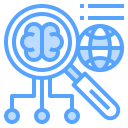Utilizing AI to Transform Customer Data into Actionable Insights
The Importance of Customer Data in Modern Business
Traditionally, customer data existed in silos—spreadsheets, CRM systems, support tickets—offering a fragmented view of interactions. AI bridges these gaps by integrating various data sources, processing unstructured information, and converting it into structured formats suitable for analysis. This enables organizations to identify critical trends and preferences that inform everything from marketing strategies to product development, ultimately driving value from data that otherwise remained untapped.

How AI Enhances Data Collection and Integration
With the proliferation of customer touchpoints, from websites to social media and mobile apps, data is generated at an unprecedented scale. AI automates the collection process, ensuring no valuable interaction is missed or misrepresented. Natural language processing, image recognition, and voice data analysis allow AI systems to capture both structured and unstructured data, delivering a holistic customer view that manual efforts cannot achieve efficiently.

Advanced Analytics: Extracting Deep Insights
One of AI’s most powerful features lies in its ability to predict future customer actions. Machine learning algorithms analyze historical patterns, identifying key drivers behind purchases, churn, or engagement. Businesses can then forecast outcomes with high accuracy, allowing them to anticipate customer needs, design tailored offerings, and proactively address pain points before they escalate.


Dynamic Content and Recommendations
Recommendation engines driven by AI tailor content, products, or services for each customer based on their historical interactions, preferences, and real-time behaviors. Whether it’s e-commerce, media streaming, or financial services, these dynamic recommendations increase relevance and conversion rates, ensuring every touchpoint feels personally curated and meaningful to the user.

Real-Time Adaptive Experiences
AI excels at analyzing data as it’s generated, allowing businesses to adapt in real-time to customer actions. From personalized emails sent at just the right moment to adjusting website layouts according to browsing behavior, AI-driven automation ensures that every customer interaction is contextually relevant and timely, leading to increased satisfaction and better business results.
Overcoming Challenges in AI-Driven Insight Generation
Customer data is sensitive, and safeguarding it against breaches or misuse is paramount. AI systems must be designed with data privacy in mind, adhering strictly to regulations like GDPR and CCPA. Techniques such as data anonymization, encryption, and restricted access ensure insights are generated responsibly and ethically, maintaining customer trust and legal compliance.
Many organizations face hurdles integrating AI with legacy infrastructure. Transitioning to AI-powered insight generation may require significant system upgrades or investments in new tools. Successful integration involves selecting compatible platforms, ensuring smooth data migration, and training staff to embrace new workflows, preventing information silos from hindering AI’s transformative potential.
AI’s effectiveness depends on the people who build, manage, and interpret its outputs. Skills shortages in data science or AI engineering can slow adoption and limit the value derived from insights. Businesses must invest in upskilling current employees and attracting new talent, fostering a culture where data-driven decisions are embraced throughout the organization.
Real-World Applications Across Industries
Retailers are leveraging AI to understand shoppers’ habits, forecast demand, prevent stockouts, and recommend products in real time. This leads to a frictionless buying journey, increased customer satisfaction, and higher retention rates. Marketers can also gauge campaign effectiveness and refine strategies on the fly, driving both engagement and revenue growth.
In healthcare, AI analyzes vast quantities of patient data to uncover trends in treatment outcomes and predict future health risks. Providers use these insights to personalize care plans, identify at-risk populations, and optimize resource allocation. This not only improves patient outcomes but also streamlines operations and reduces costs across the healthcare ecosystem.
Banks and financial institutions deploy AI to analyze transaction data and detect fraudulent activity within seconds. Sophisticated algorithms monitor for anomalies and flag suspicious behavior, reducing losses and enhancing customer trust. AI also powers risk assessment models, enabling faster, more accurate credit decisions and enabling personalized financial product recommendations.

Previous slide
Next slide

